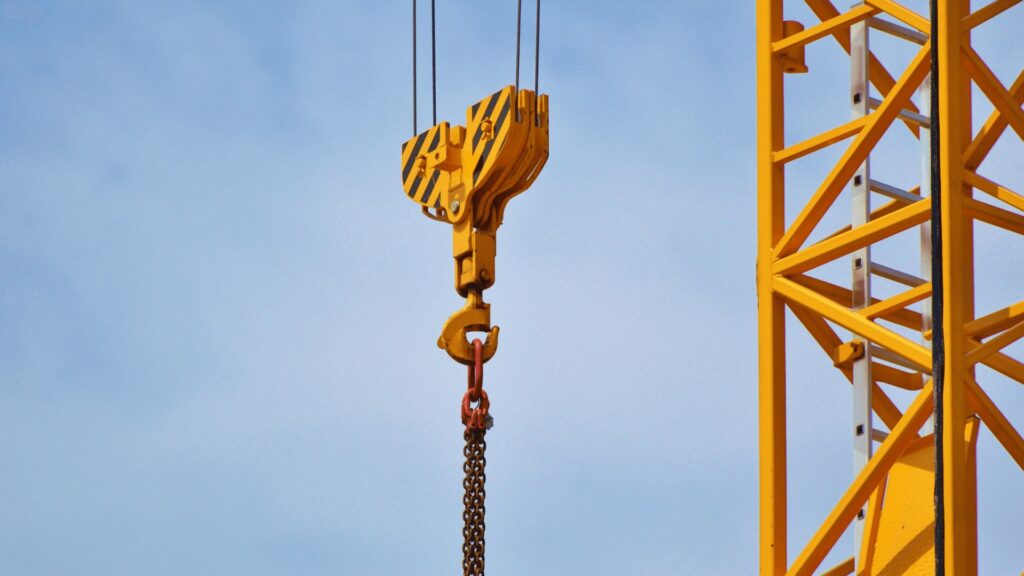LOLER regulates the use and lifting equipment, including planning lifting operations, and the specific precautions that must be taken when using lifting equipment at work. Lifting equipment is also regulated by PUWER – particularly with regards to the inspection and maintenance of that equipment.
What is LOLER?
LOLER stands for the Lifting Operations and Lifting Equipment Regulations, an HSE (Health & Safety Executive) code regulating the safe use of lifting equipment, established in 1998.
LOLER specifically outlines the responsibilities of “people and companies who own, operate or have control over lifting equipment”, primarily around safety and maintenance of that equipment. This can include businesses and organisations whose employees use lifting equipment for work, whether owned by them or not.
Above all, LOLER requires that, for lifting operations which involve lifting equipment, the operation (or activity) must be:
- “properly planned by a competent person
- appropriately supervised
- carried out in a safe manner“
In addition, the actual equipment used in lifting operations must be:
- “fit for purpose
- appropriate for the task
- suitably marked
- subject to statutory periodic ‘thorough examination’“
It is this thorough examination that Stream Check can really assist with. The regulations state that “records must be kept of all thorough examinations and any defects found must be reported to both the person responsible for the equipment and the relevant enforcing authority“.
What is the difference between LOLER and PUWER?
Equipment that comes under the LOLER regulations will likely also fall under the PUWER (Provision and use of Work Equipment Regulations).
That means that the PUWER requirements for inspection and maintenance (outlined in HSE documentation here) also apply to LOLER.
Equipment and operations that come under LOLER may fall under other regulations and HSE guidance too, like Working at Heights or PPE (personal protective equipment).
The information outlined in HSE documentation about LOLER (and distilled below) should all be followed in addition to PUWER and other applicable regulations.
What are the check requirements for LOLER, and how can you easily manage that inspection and maintenance process?
As mentioned, managing the inspection and maintenance process to stay in line with LOLER first requires that you are compliant with PUWER. Besides the general work equipment regulations, there are five key aspects of the HSE’s online guidelines around LOLER:
What is lifting equipment?
Firstly, we have to define what equipment is included under LOLER regulations. While the regulations advise that “the range of lifting equipment covered by LOLER is very wide“, HSE do give some examples of equipment that may covered by the regulations, including:
- “Overhead cranes and their supporting runways
- Patient hoists
- Motor vehicle lifts
- Vehicle tail lifts and cranes fitted to vehicles
- A building cleaning cradle and its suspension equipment
- Goods and passenger lifts
- Telehandlers and forklifts
- Lifting accessories“
This equipment is also likely to include lifting accessories, like ropes, chains and hooks. Essentially, any “pieces of equipment that are used to attach the load to lifting equipment” should be considered when planning safety and maintenance of lifting equipment.
These types of lifting equipment should be included in your considerations around LOLER when used in a lifting operation.
Using a system like Stream for walkaround checks, you can manage inspections and maintenance for every piece of lifting equipment that falls under the LOLER regulations. You can add details for each piece of equipment, including the specific set of checks required for that piece of equipment (based on your risk assessment and on manufacturer’s instructions), a check schedule (daily, weekly, monthly, etc.), and requirements for operatives using the equipment (for example, operatives may be required to have completed a specific course of internal training, or to hold a particular level of certification).
Additionally, some equipment that may be thought of a lifting equipment is specifically not covered by LOLER. This includes equipment like:
- “Pallet trucks (where the consequence of the load falling off is very low
- Roller shutter doors
- Escalators
- Fall arrest ropes
- Tipper trucks
- Dentist chairs“
While these pieces of equipment may not fall under LOLER, if they are used at work they will likely fall under PUWER and still require the inspection and maintenance process associated with work equipment regulations.
Planning and Organising Lifting Operations
The requirements of LOLER are as much about planning and organising the lifting operations (to enable the activity to be carried out safely) as it is about the inspection and maintenance of the equipment used in those operations.
This section of the regulations outlines how an organisation should plan and organise lifting operations, to ensure operative safety when using lifting equipment.
The safe planning and organisation of a lifting operation can be extensive or ad-hoc, depending on the complexity and risks associated with the operation. For low-risk, routine lifting operations (and particularly for those with a formal plan in place as part of a risk assessment), the planning can be completed by the operative, with no need to record the process.
For complex and high-risk lifting operations, though, HSE advises that “a written plan should be developed by a person with significant and specific competencies – adequate training, knowledge, skills and expertise – suitable for the level of the task“.
The plan should “address the foreseeable risks involved in the work and identify the appropriate resources (including people) necessary for safe completion of the job”
In the Stream Check equipment management screen, you are able to assign specific daily checks for each piece of equipment. You could include here a check to ensure that the proper planning procedures have been carried out, for example: “Has this lifting operation been planned and organised?” with a prompt to note the details of the plan.
Alternatively, the regulation guidelines confirm that “for straightforward, common lifting operations, a single initial generic plan may be all that is required”, with a recommendation to review the procedure periodically. in this case, a quarterly or 6-monthly check could be assigned to the piece of equipment, for example: “Has the plan for this lifting operation been reviewed?” with a prompt to note any changes to the details of the plan.
Lifting Persons
Under LOLER, equipment used for lifting persons at work has its own specific precautions. People are at greater risk when lifted by machinery than when they are just operating lifting equipment. This means that lifting equipment that is used to lift people requires greater levels of safety in regards to:
- “Design and manufacture” – As almost every piece of equipment designed for lifting people will be required to be “safe when first placed on the market” under the Machinery Directive, for businesses and operatives this requirement really means simply checking before use or purchase that machinery is marked with a Declaration of Conformity (DoC).
- “Use and maintenance” – The use and maintenance requirements for using equipment for lifting people is really not much different to the requirement under PUWER to ensure that work equipment selected for any task is:
- “Suitable for its intended purpose
- Selected so that the risks to the health and safety of users can be managed
- Used only for the operations for which it is suitable“
In short, the equipment selected must be suitable for the task at hand, operatives must be adequately trained and supervised, and equipment must be properly maintained.
- “Inspection and thorough examination” – Inspection and thorough examination of equipment used for lifting persons is an essential part of maintaining safety standards. The HSE guidance stated that equipment used for lifting persons should be subject to thorough examination every six months, as well as to regular pre-use checks and inspections, where required to ensure safety.Stream Check can be configured to add specific checks and inspections for any equipment that will be used for lifting people, to assist in compliance with PUWER regulations around this.
Thorough Examination of Lifting Equipment
The other key part of safely managing lifting operations is the thorough examination of lifting equipment. Failures or defects in any lifting equipment is likely to cause serious harm. Therefore almost all lifting equipment used in the workplace places obligations on anyone providing, controlling or using it to properly manage those risks under health and safety law. The checks are required to ensure that lifting equipment can be used safely and may include:
- “Simple pre-use checks” or daily checks
- “Inspections and checks made on a regular basis, often weekly, but this may be on a monthly or quarterly basis“
- Thorough examination (“normally once or twice a year but, in some cases, this may be more or less frequent“)
As with inspections and maintenance work requirements for PUWER, Stream Check can be used to manage the examination of lifting equipment by adding specific check types and check schedules for each type of equipment.
Passenger Lifts and Escalators
Most passenger lifts and escalators don’t fall under LOLER regulations. Lifts in workplaces (for example in offices and factories), including those lifting passengers and those lifting goods, are subject to the requirements of LOLER and PUWER for regular inspections, examinations and maintenance.
For “lifting equipment which is not provided for, or used by, people at work“, LOLER and PUWER do not apply, though other health and safety regulations and legislation are likely to”.
Additionally, for escalators, ‘travelators’ and moving walkways (even ones that ‘lift’ people across floors), LOLER does not apply, though his equipment is still covered by the Workplace (Health, Safety and Welfare) Regulations 1992.
How Stream’s Walkaround Check feature can help you to manage safety checks and stay LOLER compliant
As you can see, Stream Check is built flexibly enough to fulfil the needs of businesses operating lifting equipment which falls under LOLER regulations.
You can add specific checks and inspection schedules for individual types of lifting equipment, restrict assigning of operatives to particular pieces of lifting equipment based on training and qualifications, remind operatives to plan and organise lifting operations safely (and record that plan, where required), and ultimately ensure the safe operation of lifting equipment.
This helps to keep you compliant (and to prove your compliance) as well as improving overall productivity by keeping the parts of your business that rely on lifting equipment running smoothly.
Read our guide to managing work equipment and plant machinery that falls under PUWER, and Schedule your demo to learn more about how Stream Check can help you to maintain compliance with PUWER and LOLER guidelines.








